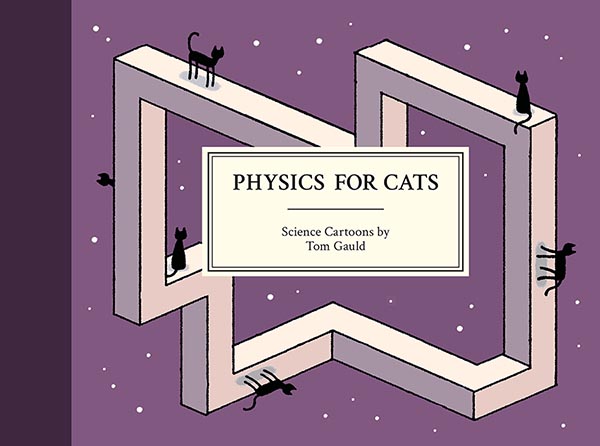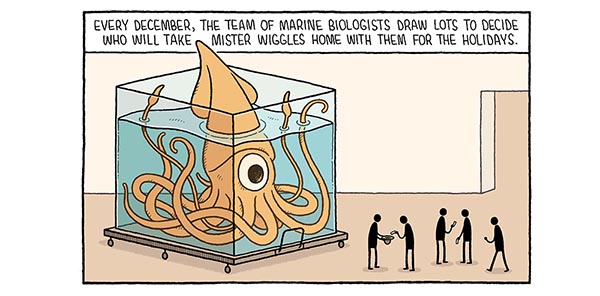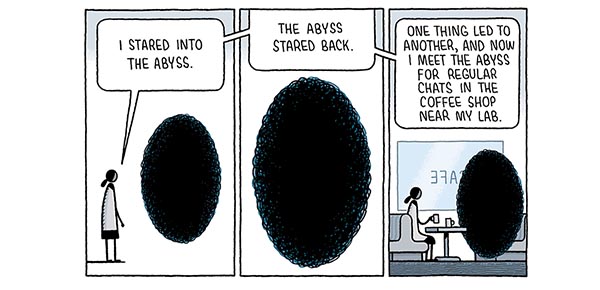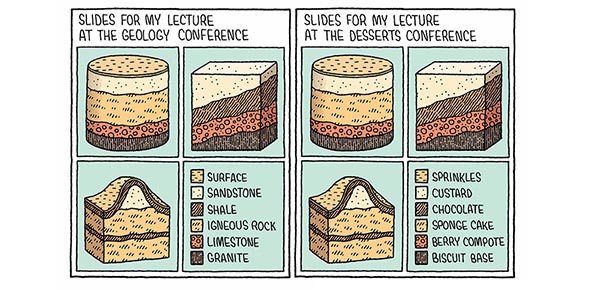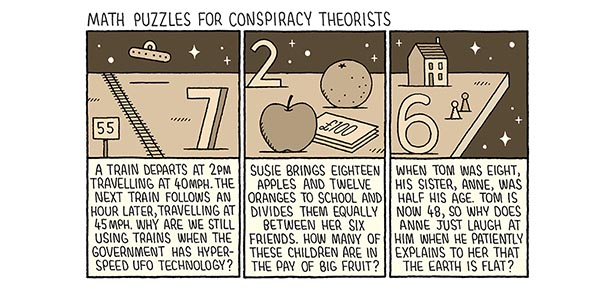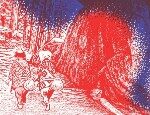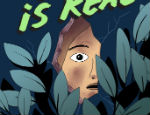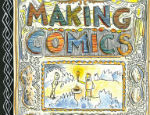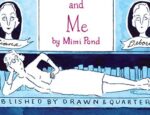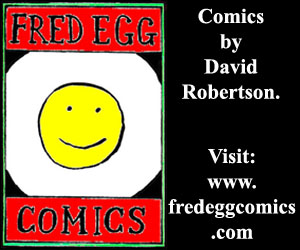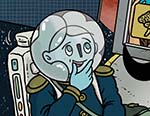There are presumably two kinds of people who adore the work of Tom Gauld and rush out to purchase anything he puts out. The first are those who can’t help but chuckle at the obvious wit that has made his comics so familiar and beloved. The second are those who probably spend an inordinate amount of time trying to figure out what Gauld’s bookshelves must be like. What does he read, these people may wonder, and what prompts him to look at the world in this manner? How does he find inspiration in such arcane, obscure corners?
Physics for Cats will make both kinds of readers happy. There’s enough to please those who loved his last collection Revenge of the Librarians, and a lot to occupy science nerds who can’t move past a joke without analysing it. For the latter group, this approach may or may not yield rich dividends because trying to find out how a Tom Gauld gag is set up quickly undermines it, although that shouldn’t take away from the readability of this collection.
It’s also an interesting title — a nod at how the subject has occupied scientific minds for a surprisingly long time. In fact, as early as April this year, a paper published by Nature Reviews Physics focused on the ‘buttered cat paradox’ of how a cat with a piece of toast strapped to its back would land. Gauld revels in the seriousness behind these seemingly goofy thought experiments, and it is the consistent balance of absurdity and amiability that makes his work so relatable.
To be fair, not everything works, because many of these cartoons are removed from their original settings in the British magazine New Scientist. Among those pages, they act as foils for serious scientific papers, lending the humour a levity that isn’t as pronounced when the comics appear one after the other. In this instance, they start to lose potency, making this a book that works better when dipped into rather than read from cover to cover.
One of the nicest things about The Physics of Cats is how it makes no excuses for Gauld’s erudition or wide-ranging interests. In his Department of Mind-Blowing Theories, for instance, he managed to squeeze in references to everything from alchemy and MC Escher to fairytales, nanobots, and even heavy metal. That embrace of the wildest corners across art and culture continues among these ‘science cartoons’, where black holes and Faust, the Large Hadron Collider and Søren Kierkegaard all come together within tight, crosshatched panels. There are also references to the peculiar times we live in—pandemics, climate change denial, and funding cuts that are the bane of every scientist’s existence.
It is sometimes easy to imagine Gauld as a stand-up comic, given how he sets up a joke or the deadpan delivery that is so characteristic of everything he creates. What is sometimes easy to forget, however, is the empathy with which he mines so many aspects of the human condition. By poking gently at the seriousness with which we approach life and living, he reminds us that the things we find strangest are often what make us beautiful.
Tom Gauld (W/A) • Drawn & Quarterly, $21.95
Review by Lindsay Pereira





